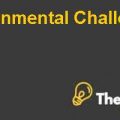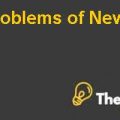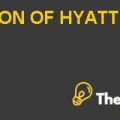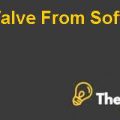
CORE COMPETENCIES
| Functional Areas | V | R | COI | NS | Competitive Consequence | Performance Implications |
| Financial | Yes | No | Yes | Yes | Sustainable competitive advantage | Above-average returns |
| Distribution | Yes | Yes | Yes | Yes | Sustainable competitive advantage | Above-average returns |
| Management Information Systems | No | No | No | No | Competitive parity | Average or lower returns |
| Marketing | Yes | Yes | Yes | No | Temporary competitive advantage | Average to above-average returns |
| Management | Yes | Yes | No | Yes | Temporary competitive advantage | Average to above-average returns |
| Manufacturing | Yes | Yes | No | No | Competitive parity | Above-average returns |
| Research & Development | Yes | Yes | Yes | No | Sustainable competitive advantage | Above-average returns |
1. Describe competitive strategies and tactics each company (Wahaha/Coke/Pepsi) used to gain market share in China. Did any company appear to be winning the Chinese “cola war”? Support your answer.
COMPETITIVE STRATEGIES AND TACTICS OF COCA COLA
Coca Cola had recently instituted a “think local, act local, but leverage global” mandate to empower local decision-makers, in recognition of the need to both respond to local preferences and react to local competitors. In response, its local subsidiaries had launched a wide variety of drinks aimed at local needs.
In addition to its global carbonated drink brands, the company also developed local brands. In its advertising the company included Chinese cultural icons such as windmills and dragons. It also sponsored many impactful Chinese events such as International Olympics, National Soccer Tournament, etc. According to Wall Street Journal article, “Coca Cola had been aggressively ramping up its sales efforts by opening more bottling plants and using recyclable bottles, it has brought the price down to one yuan for a single serving in remote towns.”
COMPETITIVE STRATEGIES AND TACTICS OF PEPSI COLA
Pepsi Cola signed a deal with Chinese government to establish a joint venture bottling plant in Shenzhen. By 2002, the company had invested a total of US$500 million in China on 14 bottling plants and employed close to 10,000 people. Unlike Coca Cola, Pepsi Cola sought a majority share in joint ventures. Its flagship carbonated drinks in China were: Pepsi Cola, Pepsi light, Pepsi Twist, 7Up, Miranda and Mountain Dew. It also owned local brands such as Asia, Arctic and Tianfu. According to A.C Nielsen’s market data in Asia, Pepsi Cola was the most popular soft drink brand for young consumers, a reflection of its positioning for that demo-graphic market. In its advertising in China, Pepsi Cola used popular entertainers as endorsers. Despite its marketing efforts and popularity among China’s youth, Pepsi Cola China had not been profitable during its 20 years in China.
COMPETITIVE STRATEGIES AND TACTICS OF WAHAHA
By 1998, Wahaha had strongly established its production and distribution system therefore, it decided to enter in the cola market. Wahaha Future Cola decided to target the rural market first because they knew and understood this market along with the fact that it was not the focus of Coca Cola and Pepsi Cola. To develop the product, Wahaha co-operated with R&D institutes and leading domestic flavor producers. To ensure that its cola would be of high-quality, Wahaha sought the advice of global beverage experts and conducted thousands of taste tests worldwide. Its taste was designed to be close to international colas, but a little bit sweeter and stronger to cater to the Chinese consumer’s taste. In domestic build taste tests, consumers preferred Wahaha Future Cola to other colas. Wahaha had the strategy to win a price war if one of the multinational giant started one as Wahaha maintained that its revenues from other products could support Future Cola through a price war. Wahaha relied on its nation-wide distribution network to get the product to rural customers. While Coca Cola and Pepsi Cola had the advantage in large cities where chain stores and supermarkets accounted for half of the grocery trade, Wahaha played on its strength in the country side where the trade was fragmented and reachable primarily through multi-layered wholesale markets. Wahaha’s Future Cola was advertised heavily with a huge budget. In 2001, Wahaha’s Future Cola launched a new advertising slogan “Future Cola, the choice for happy occasions.................................
This is just a sample partial case solution. Please place the order on the website to order your own originally done case solution.












